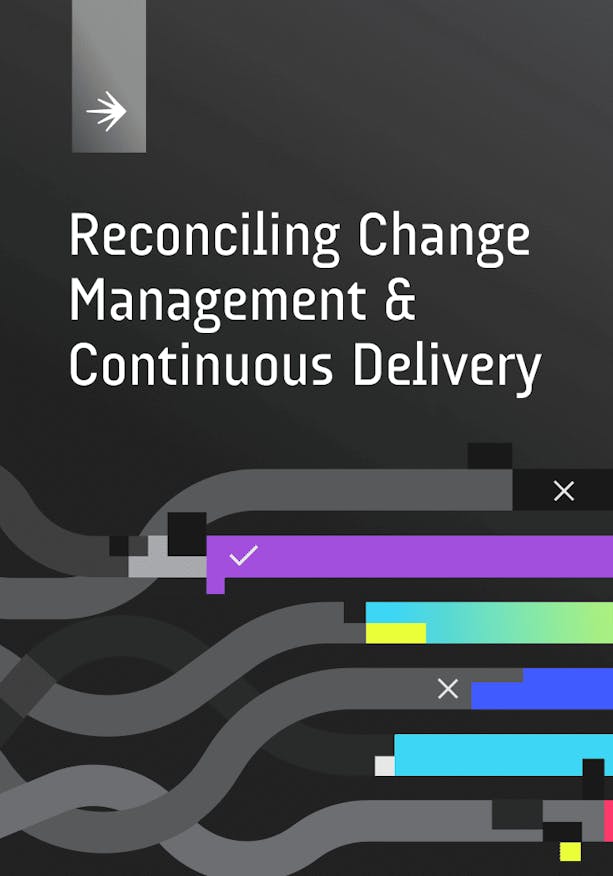Reconciling change management and continuous delivery.
The secret to automating releases, mitigating risk, and maintaining compliance.

Introduction
Software and innovation go hand in hand. Indeed, what business today can profess a need to innovate faster without mentioning software in the same breath? In 2015, McKinsey warned that “new research suggests that companies pay a price when they undervalue the strategic importance of producing excellent software.” Subsequent research agrees.
To furnish excellent software, you must excel at delivering software. The DevOps Research and Assessment (DORA) group offers a helpful model for measuring software delivery performance. In broad terms, they look at speed, stability, and reliability.
Some organizations have it all: high speed, high stability, and high reliability. But countless others can only lay claim to one or two of those performance markers. And when the choice becomes either speed or risk mitigation, the latter often prevails. Erring on the side of caution is wise, of course, when dealing with things like personal health data, financial assets, and national security. Even so, if software development is critical to your business, then speed must be critical as well.
Unfortunately, many companies are hampered by sluggish bureaucracies. They run new software features through heavy change management protocols such as those involving a change advisory board (CAB).
Gartner predicts that “by 2023, 90% of organizations will fail to meet required release velocities to deliver full business value to their customers if they use a centralized release management approach in DevOps environments.” That’s a mouthful. But if Gartner’s prediction contains enough truth, then the question organizations need to answer is:
How can we accelerate software delivery—i.e., innovate faster—while mitigating risk and maintaining regulatory compliance?
In this paper, we’ll explain how feature management answers that question. Further, we’ll show how to leverage feature flags within a feature management platform to:
- Decentralize software change approvals
- Cut out the inefficiencies of change management while amplifying its positives
- Enable safe, compliant continuous delivery
- Automate release workflows in which change controls are embedded
- Advance platform standardization
In short, we’ll explain how you can have it all.
Guides & Ebooks
See allSign up for our newsletter
Get tips and best practices on feature management, developing great AI apps, running smart experiments, and more.












